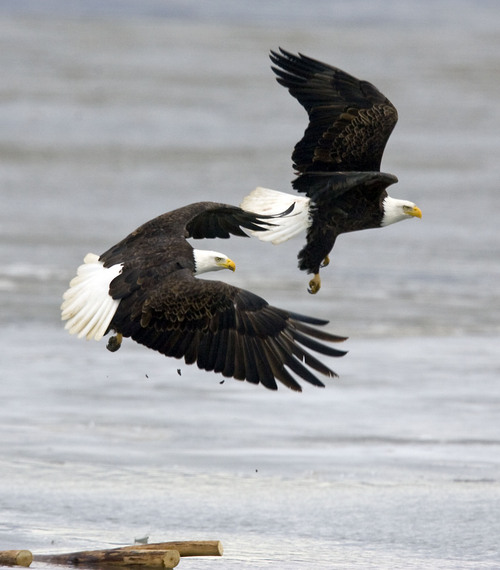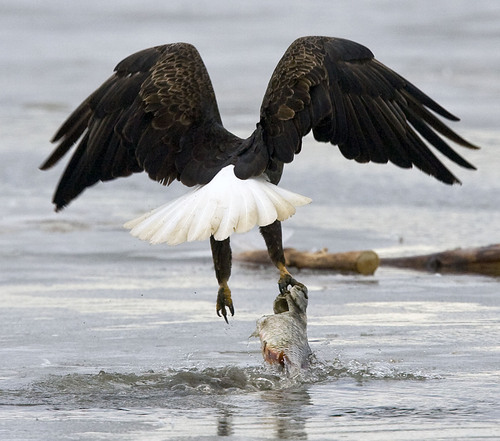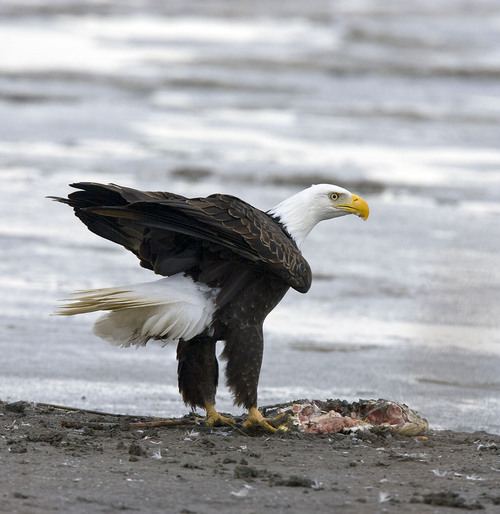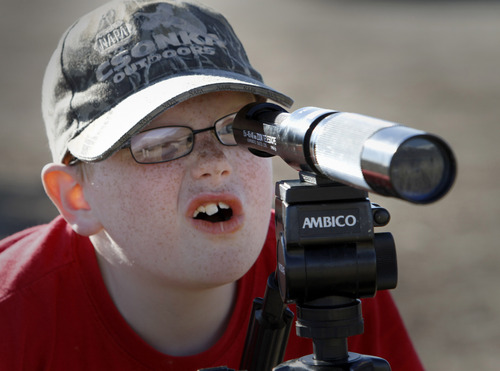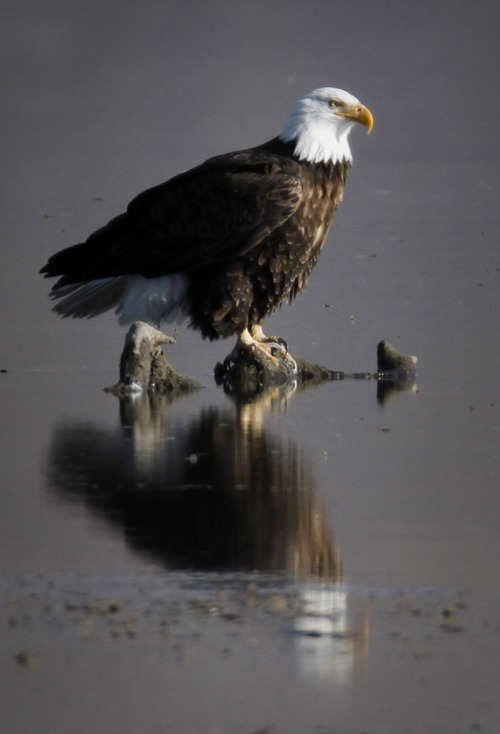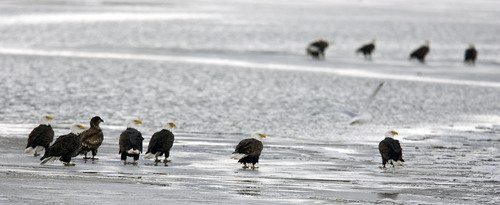This is an archived article that was published on sltrib.com in 2014, and information in the article may be outdated. It is provided only for personal research purposes and may not be reprinted.
There may, or may not, be fewer birds to see, but the Utah Division of Wildlife Resources is going ahead with its popular annual Bald Eagle Day in early February despite the deaths of at least 47 of the raptors due to what has been identified as West Nile virus.
The event, scheduled Feb. 8 at five places across the state, is held to give the public a chance to see and learn about the national symbol of the United States.
"Bald eagles are unusual as a bird of prey in that they are very social in the winter. It just seems like they like chilling with one another for roosting and feeding," said Bob Walters, watchable wildlife coordinator with the Utah Division of Wildlife Resources (DWR).
"They will gather in certain locations," he said, "and that will happen despite the losses we have seen from West Nile."
Walters said the agency will use Bald Eagle Day as an opportunity to discuss what is happening with the West Nile outbreak in Utah this winter.
Up to 1,200 migrating bald eagles winter in Utah each year. They gather in large numbers at places where they can find food, many of them in marshes along the Great Salt Lake in northern Utah.
But the number of bald eagles that show up at places like Farmington Bay Waterfowl Management Area, the most popular gathering on Bald Eagle Day, varies from year to year, depending on available food sources.
Walters started Bald Eagle Day in 1990. He soon recognized that the water-scavenging raptors were focusing on the large number of carp that refuge managers were removing each winter during low water.
The eagles use the food resource being provided in areas where they were already gathering. The question wildlife officials are asking is whether encouraging the eagles to congregate is a good idea, with the population around the Great Salt Lake continuing to be affected by West Nile virus.
A decision on whether to go ahead with planned nonnative carp removal — an effort to help water quality and improve habitat on the marshes — has not yet been made, but the eagles have habituated to the food source through the years and some have started to gather in anticipation already.
Leslie McFarlane, wildlife disease specialist for the DWR, confirmed Monday the number of known dead bald eagles is 47 and four are currently in wildlife rehabilitation centers.
She said biologists will continue to observe the large congregations of wild raptors and individuals before they head north again, typically in mid-March.
"This situation is not completely over and it is going to take quite a bit of time to learn and understand the incident in its entirety," McFarlane said.
Twitter: @BrettPrettyman Bald Eagle Day
Biologists and volunteers will meet at the following locations and times Feb. 8 as part of Utah's annual Bald Eagle Day. Spotting scopes and binoculars will be available so you can see the birds up close, but if you have your own, please bring them.
Salt Creek Waterfowl Management Area • 10 a.m. to 3 p.m.
Farmington Bay Waterfowl Management Area • 9 a.m. to 4 p.m.
Fountain Green State Fish Hatchery • 9 a.m. to 4 p.m.
Split Mountain/Green River • 9 a.m. to 3 p.m.
Cedar Valley • 9 a.m. to 2 p.m.
Online • Find out more information. > wildlife.utah.gov —
Eagles in action
O Watch a video of bald eagles at Farmington Bay Waterfowl Management Area from the Salt Lake Tribune and KUED-Channel 7. > bit.ly/eaglesvideo



